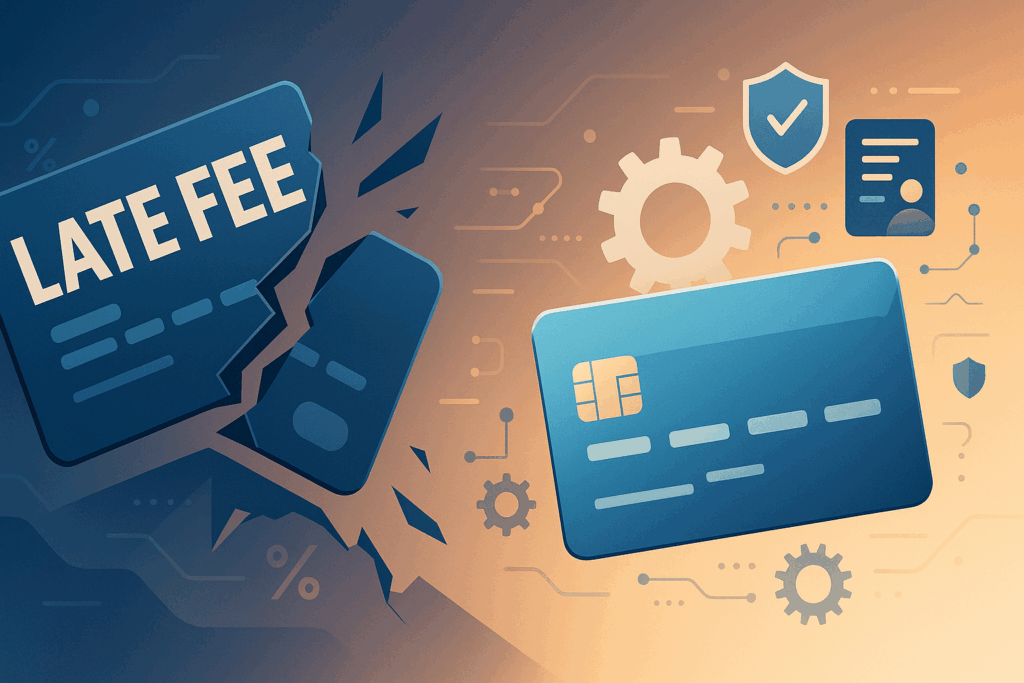Over the past few months, the financial landscape in the U.S. has been stirred by an important regulatory update. The Consumer Financial Protection Bureau (CFPB) introduced new limitations on credit card penalty fees, sparking a wave of reactions across the industry. These changes aim to promote fairer practices and increase transparency, directly affecting both card issuers and users.
This article explores how these reforms are transforming fee structures, how financial institutions are adapting, and what this means for your wallet. Whether you’re a casual user or someone managing multiple accounts, understanding the impact of this regulatory update is essential. Let’s break down what’s changing and why it matters now more than ever.
Credit card fee reform sparks industry-wide reaction

At the core of the CFPB’s update is a cap on late fees for credit card payments, aiming to prevent what the bureau describes as “junk fees.” Previously, issuers could charge as much as $41 per missed payment. Under the new rules, that figure is capped at $8, unless issuers can prove higher costs. This shift intends to protect consumers from excessive penalties, especially those already navigating financial challenges.
The immediate response from large financial institutions has been mixed. While consumer advocates celebrate the move, some issuers argue that it could result in higher interest rates or reduced cardholder perks. The reform reflects growing governmental scrutiny over how financial products impact vulnerable populations.
How cardholders might feel the difference
Although a reduced penalty may sound like a win, the reality is a bit more nuanced. Issuers may look to compensate for the lost fee revenue by tweaking other aspects of their credit offerings. For example, some cards could introduce higher annual fees or trim cashback rewards. This potential trade-off is already sparking debate among consumer watchdogs and financial analysts alike.
According to data from industry trackers, late fees historically accounted for over $12 billion in annual revenue. That’s a lot of lost ground for lenders to make up. Some issuers have already announced changes to their terms. Others are exploring behavioral-based interest models, which tie rates more closely to a user’s spending and repayment habits.
Financial planning under the new fee structure
As these shifts take hold, it’s more important than ever to be proactive with your credit behavior. Paying bills on time, even by a day or two, can now have a different weight—not just in terms of avoiding a fee, but also in how you’re scored and segmented by your issuer. Monitoring your statement cycle and automating payments can help minimize risk.
Consumers should also anticipate changes in how card offers are marketed. Instead of focusing solely on flashy signup bonuses, issuers may begin to emphasize reliability and repayment incentives. Financial literacy will play a critical role in helping individuals choose the right products under this evolving structure.
Smart habits to stay ahead
If you rely on credit for everyday expenses, now’s a good time to reassess your strategy. Tools like budgeting apps, payment reminders, and balance alerts can make a big difference in staying organized. Try setting your due date right after payday or linking payments to a dedicated account to avoid overdrafts.
When evaluating new offers, pay attention to hidden terms like inactivity fees, foreign transaction charges, or tiered interest rates. Even if late fees are lower, other lesser-known costs may quietly increase. Comparison tools and user reviews can help you spot these adjustments before they impact your bottom line.
